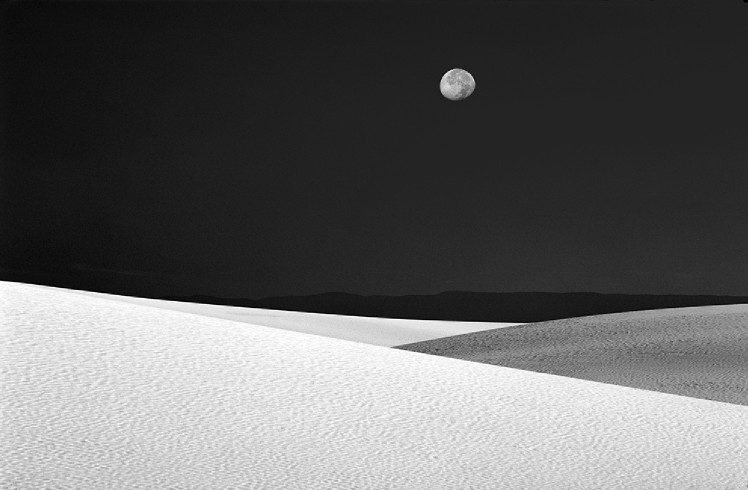Wednesday, September 11, 2013 | By: Jim Zuckerman

When I add a moon to a landscape or cityscape, I rarely use a full moon. It seems too much of a cliche. Instead, I use a thin cresent moon or, in the case of the image here that I took in White Sands National Monument, New Mexico, I used a gibbous moon. I think this looks like natural as opposed to being Photoshopped.
It is impossible to add a moon to a twilight or night sky with a single exposure -- unless you are happy with a completely overexposed moon such that the lunar surface is completely blown out (meaning solid white). That's not what you see, and that's not what you want. Detail in the lunar surface is obviously the ideal. In order to do that, you need two different shots where you expose correctly for the moon in one picture, and where you expose correctly for the land in another picture. Then, in Photoshop or Elements, you can put them together. It's the only way to do it and make it look like we see it. The contrast between the moon and the landscape or cityscape is too great for a digital sensor to give you the kind of exposure you want with a single picture.